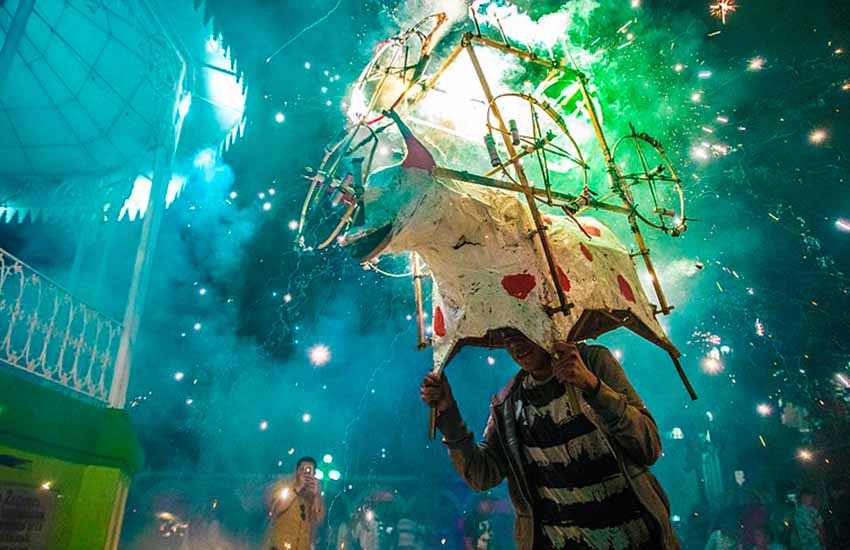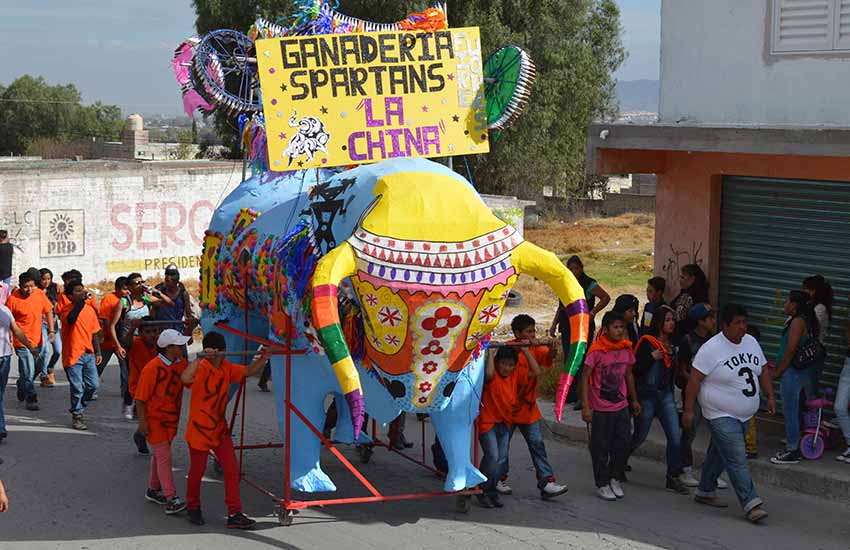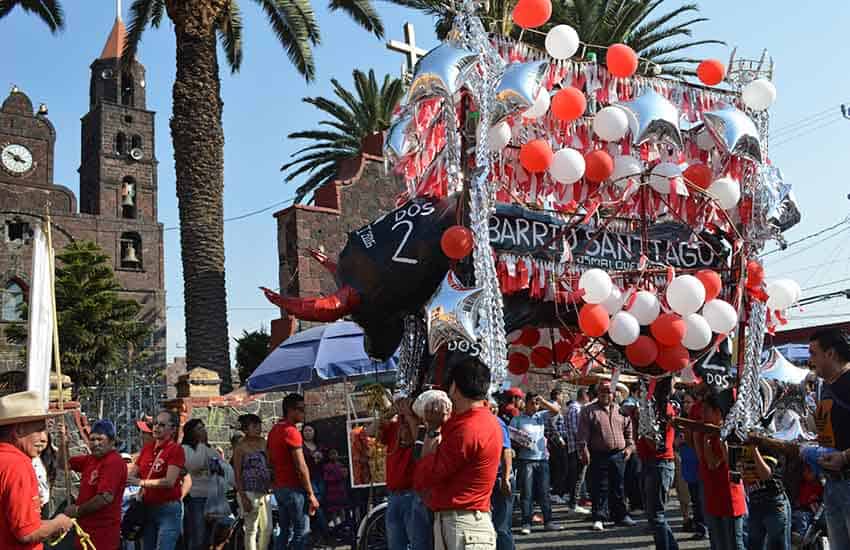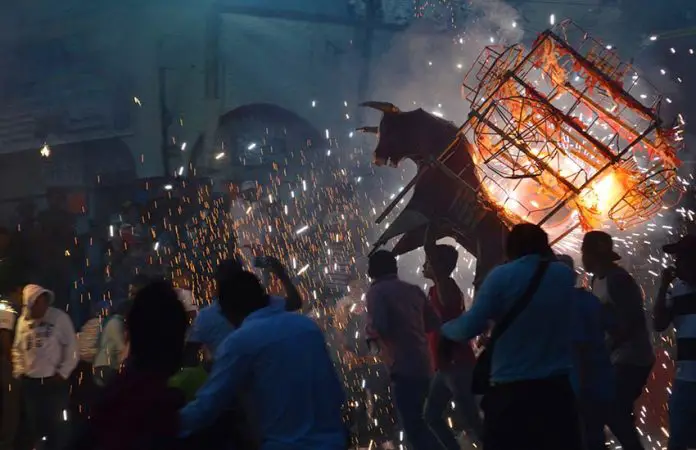Centuries ago, in the Old World, a kind of a cult focusing on bulls emerged, taking on various forms with the passage of time. By the time of the Spanish conquest of Mexico, bulls were no longer regarded as gods, but they still held an important role in the imagination and in local celebrations, the most famous in Spain being the running of the bulls in Pamplona.
Letting bulls loose in the streets of Mexico does happen in a few places, but in most communities, bull figures and dances replace the highly dangerous and unpredictable animals. However, one of the draws of Pamplona and the like is the rush of adrenaline of putting your life on the line and beating the odds, so one bull-themed tradition here does seek to reproduce that rush.
The Mexican tradition of toritos, (little bulls) is not generally about realistic depictions but rather bulls made of papier-mache and/or wood, cane or wire that are painted in bright colors and with intricate designs. They are small enough and light enough to be mounted on a dancer’s head and shoulders or simply held in the air.
So where does the adrenaline come in? One word: fireworks.
The toritos are laden with as many firecrackers and rockets as the maker/dancer can afford. While in most towns, they are paraded in the daytime, their real purpose is to be set off at night as the bearer runs around the crowds, showering people with sparks and flying rockets.

These toritos can be found in many communities large and small all over central and southern Mexico, down into Guatemala. They are particularly popular on patron saint feast days.
But for some communities in and around Mexico City, these little bulls aren’t dangerous enough. They have grown in size to monumental proportions, along with the number and types of fireworks.
In towns like Teyahualco, Zapotitlan and others, these monumental beasts can reach up to three meters in height. They dominate festivities not because of their numbers but because of their sheer size. These torotes (large bulls) are often paraded around during the daytime so that the public can see the work and care that went into making and decorating each one.
In these towns, the smaller version still dominates, mainly because of cost: most are not willing or able to put together up to 20,000 pesos to create one of these beasts.
With one exception.
Tultepec is an edge city, part of Mexico City’s metropolitan area. It has produced fireworks (and gunpowder) since the colonial period, but its current fortunes came about when the making and storage of fireworks were banned in Mexico City proper in the mid-20th century.

Today, Tultepec is Mexico’s primary maker of handcrafted fireworks. By extension, it is also an important maker of traditional fireworks arrangements such as toritos and castillos — the latter a wooden frame with mobile parts powered by fireworks.
Early March is important to this city not only because its patron, St. John of God, is celebrated on March 8 but also because since 1989 it has hosted Mexico’s International Pyrotechnics Fair. This year the fair is taking place in Tultepec from March 4 to March 14.
The “running” of toritos in Tultepec has a history going back to the middle of the 19th century. It is even called the Pamplona.
The growth of the toritos into torotes likely began here starting in the early 2000s. They are now so large that they need to be wheeled around by a group of people rather than danced on the head and shoulder of one person.
The group heaving the monstrosity around is also the one that spent months and thousands of pesos to create it — one of over 300 bulls paraded around the town during the day. At night, almost one by one, the fireworks on the bull’s back are set off. Each bull is usually spent in less than 20 minutes, rendering the work ruined, but the sheer number of bulls means that there are fireworks going off in Tultepec almost all night.
My first experience with this “Pamplona” was in 2016, and I was fortunate because very soon afterward, local authorities decided to make changes.

The bulls are still paraded around the town, a spectacle to enjoy itself, but the nighttime “burning” of these bulls was moved to a field outside of town. The main reason was practical: there simply isn’t enough room to maneuver figures over three meters tall into the small-town plaza where they had been set off for over a century.
The field they use nowadays has been set aside specifically for fireworks-related events, including the castillo-making contest that is the heart of the National Fair and is now called the torodromo (bulldrome).
Fortunately, the change does not mean that you can no longer risk your skin. You can still dance and run around the moving bulls and flying rockets, or you can hang back (an option that I admit was difficult to exercise before).
The only thing missing is what’s left of Tultepec’s small-town feel, which you can only experience in its historic center.
Leigh Thelmadatter arrived in Mexico 18 years ago and fell in love with the land and the culture in particular its handcrafts and art. She is the author of Mexican Cartonería: Paper, Paste and Fiesta (Schiffer 2019). Her culture column appears regularly on Mexico News Daily.
